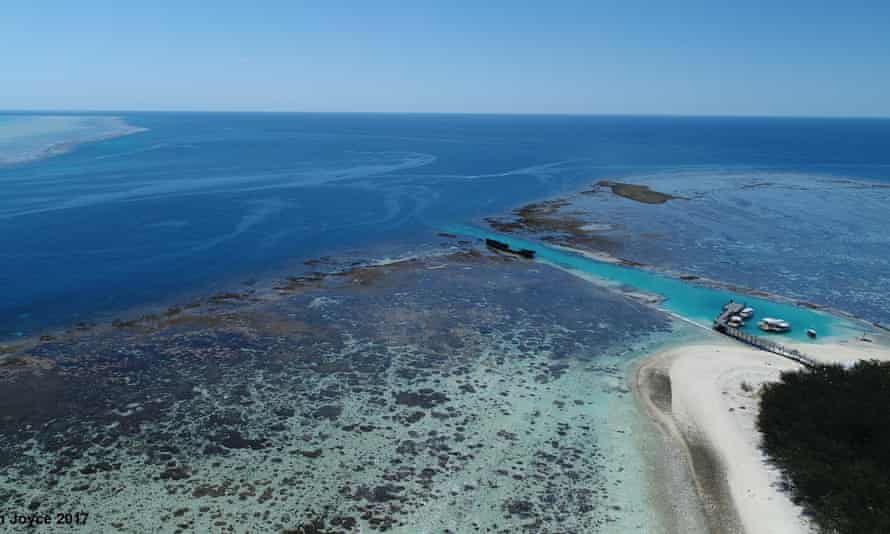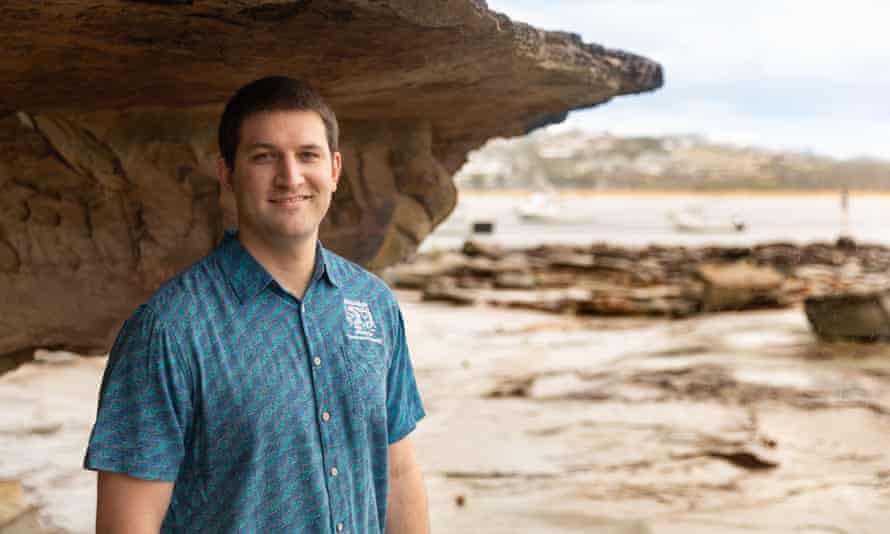“In the wee hours of the morning … we weren’t too excited to be spooning poo,” reef ecologist Dr Vincent Raulot says.
But that’s exactly what he and a team of researchers did to calculate out how much poop was excreted by an estimated 3 million sea cucumbers on the 20 sq km Heron Island coral reef in Queensland.
The answer? Some 64,000 metric tonnes a year – slightly more than the mass of five Eiffel Towers.
Vincent, from the University of Newcastle in New South Wales, has been studying the “burnt-sausage-looking animals” – that in other parts of the world are being fished to towards extinction – to better understand the vital role they play in the health of coral reefs.
“Sea cucumbers are not a charismatic animal,” he told Guardian Australia. “Initially, people wouldn’t think they do much at all, and there has not been much research on the importance of these animals and their faeces in our reef systems.”
Raulot, along with holothurian expert Jane Williamson and remote sensing experts Karen Joyce and Stephanie Duce, co-authored a recent study into sea cucumber poop and its critical role in marine ecosystems.

The researchers, from Australia’s James Cook, Macquarie and Newcastle universities, wanted to quantify their role as bioturbators.
Similar to an earthworm, they suck up sediment, eat the micro-organisms living on the sand and then poop it out. The faeces aerates the upper surface of marine sediment, creating a safe habitat for other organisms like crustaceans. It also releases nutrients such as nitrogen, which fertilises the water to assist the growth of organisms like algae, which are eaten by other animals. And, critically, it releases calcium carbonate, which helps coral skeletons grow.
“With the coral reef under threat from climate change, that calcium is so important,” Raoult said.
Previously, researchers manually counted sea cucumbers, either from a boat or by snorkelling “in approximately straight lines and manually recording every sea cucumber that is seen”. That has limited the size of studies.
“That’s where the drones come in,” Raoult said. “With drone and satellite data, we are able to map out large sections of the reef, quickly, and with high accuracy.”
The researchers used drones to map and count cucumbers across nearly 30,000 sq metres of Heron Island, in the southern Great Barrier Reef, and extrapolated there would be 770,000 sea cucumbers on the outer reef and 2.3 million on the inner reef.
Then the study moved to experiment tanks – and that’s where the spoons come in.

Over 24 hours, Raoult and the team, which was led by Williamson, measured the volume of faeces produced by individual sea cucumbers.
“Every hour we would sit there, and take a spoon, and collect the little faecal pellets these sea cucumbers would produce,” he said.
Once the researchers knew how much poo was released by a sea cucumber in a day, they estimated the total bioturbation across the reef. “Total bioturbation from holothurians at Heron Reef was estimated at over 64,000 metric tonnes per year,” the study found.
Asked where the Eiffel Tower comparison came from, Raoult noted: “I’m French, so I’m a bit biased.”
In Asia, East Africa and elsewhere, sea cucumbers are fished for the luxury food trade – fetching $80 a kilo – which has caused their numbers to decline. Seven species are endangered and nine are in the vulnerable category.
Some reefs in these regions as a consequence are now covered in blue-green algae and the sediment is turning black.
“Our reefs are already under threat from climate change,” Raoult said.
“If we want to have healthier reefs, we can’t just ignore the fact that sea cucumbers are disappearing and focus solely on climate change, even though that is the major threat to coral reefs. We have to make sure that we address other issues such as overfishing as well.”